Home » Posts tagged 'Japanese'
Tag Archives: Japanese
Recipe: Japanese Simmered Pork Belly – Buta no Kakuni
Japanese simmered pork belly, known as buta no kakuni, is a rich, indulgent dish that is sweet, savoury, sticky and utterly sumptuous. Pork belly is a really fatty cut of meat but fat means flavour and the process of cooking the pork for a long time ensures that a lot of the fat will melt away. Any fat that remains is soft and juicy.
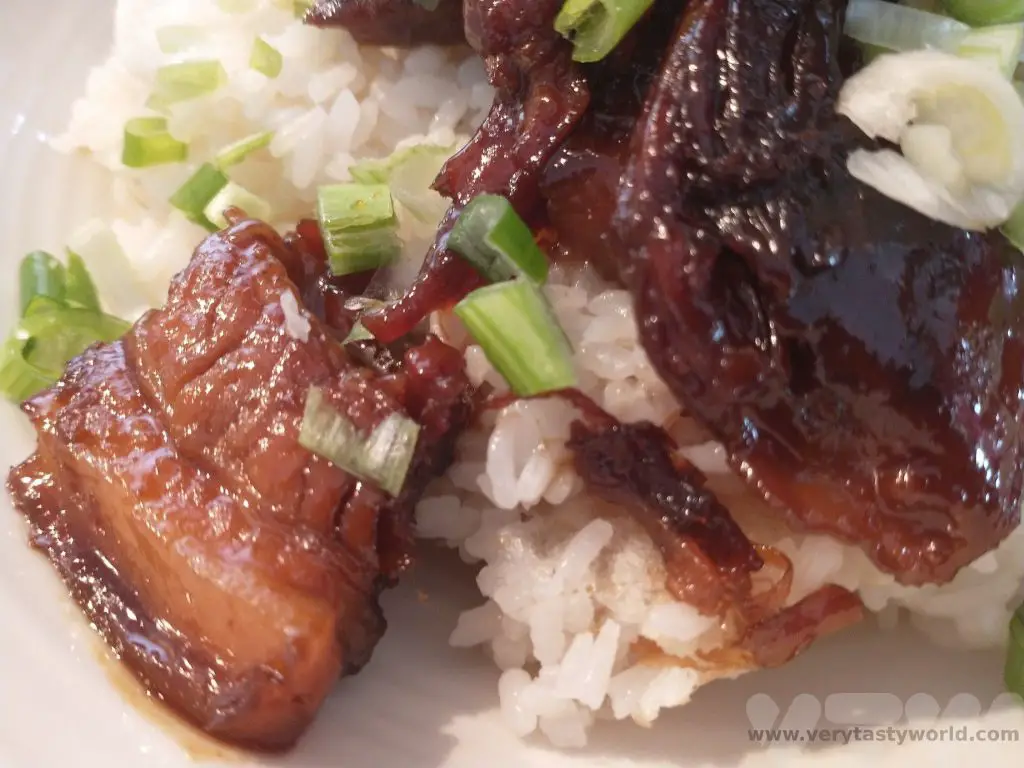
In Japanese, buta means pork and kakuni derives from two longer words: kaku- to cut into cubes and ni – simmer.
It is traditional to serve kakuni with a drop of Japanese mustard called karashi (辛子 or からし). Karashi is a bit darker yellow than most other mustard. It does not really have much acidity in it (unlike other mustards) and very hot. It is perhaps closest to hot English mustard, which is a good substitute.
How to Make Buta No Kakuni Japanese Simmered Pork Belly (Serves 2)
Ingredients
Portion of pork belly per person (allow around 150-200g per person depending on how hungry you are)
Water
Stock cube – dashi stock if possible or you can make your own
2 spring onions, sliced into 2-3cm chunks plus another for garnish
2 inches of ginger, peeled and cut into strips
16 tbs (1 cup) of water
4 tbs (1/4 cup) soy sauce
4 tbs (1/4 cup) cooking sake (if you can’t get sake, white wine will be a good substitute)
4 tbs (1/4 cup) caster sugar
4 tbs (1/4 cup) mirin (if you can’t get mirin, add a little more sake and sugar)
Generous splash of rice vinegar (we like this to counterbalance some of the sweetness of the dish)
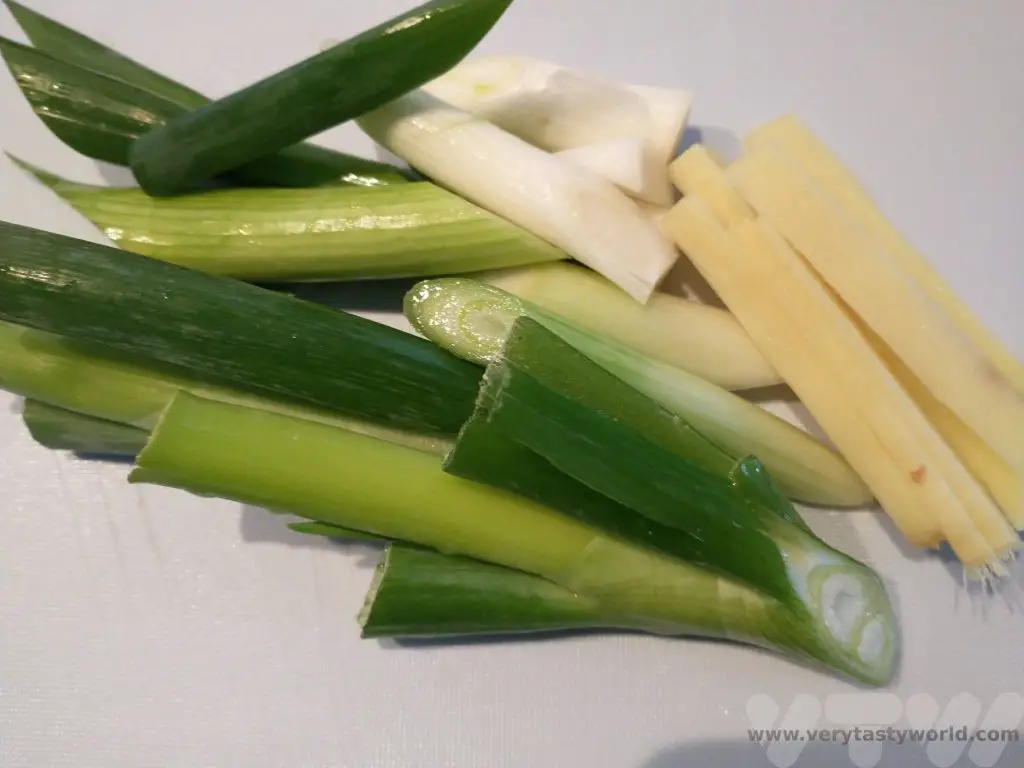
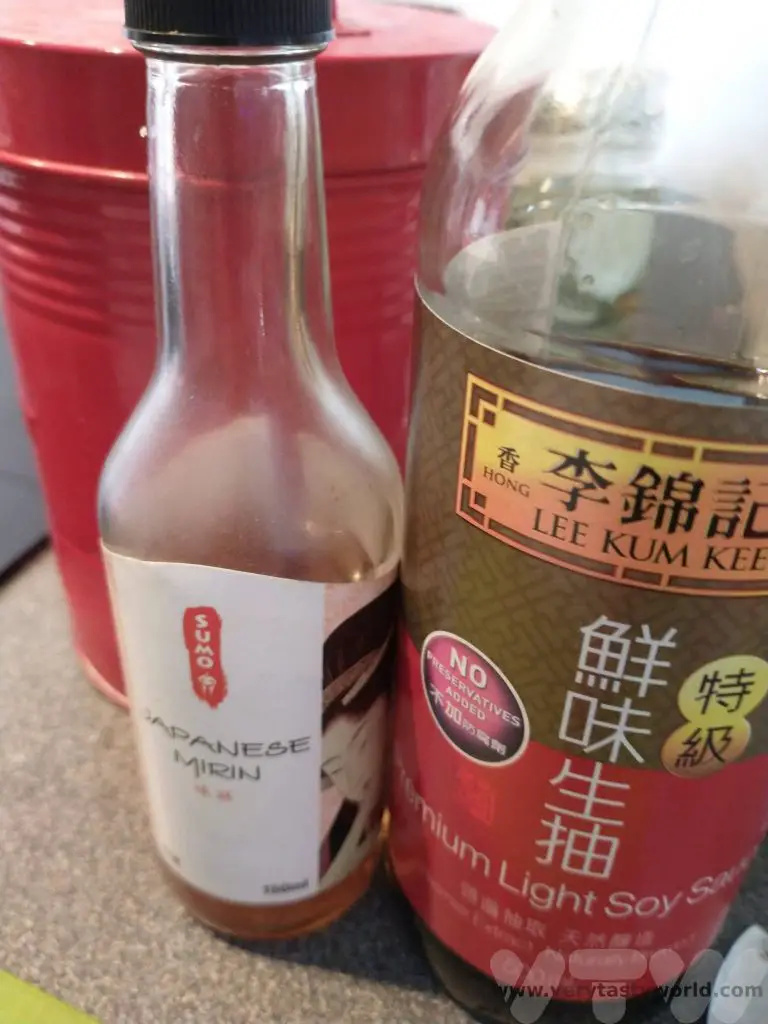
Method
Place the pork belly in a frying pan and sear on both sides for a couple of minutes.
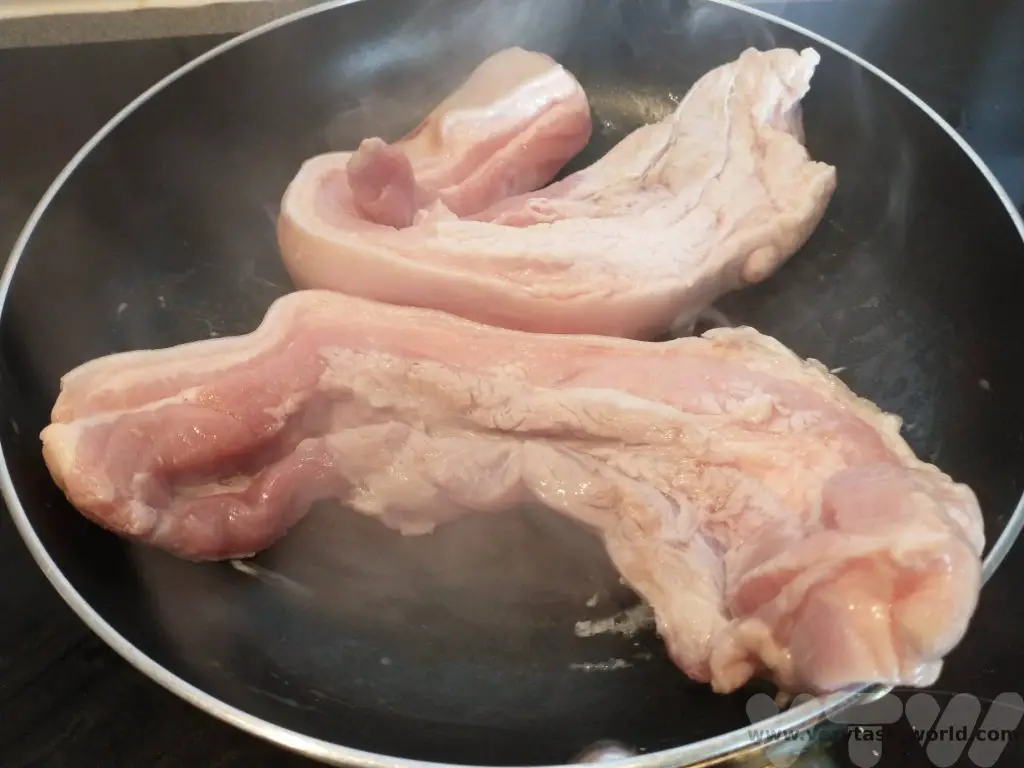
Place the pork belly in a pot and cover with water. Add the stock cube, spring onion and ginger. Turn on the heat and bring the water up to a simmer. Simmer the pork for 2 hours or until nice and tender. Alternatively, you can do as we do and use a pressure cooker. Just prepare the pork as above and cook at pressure for 40 minutes.
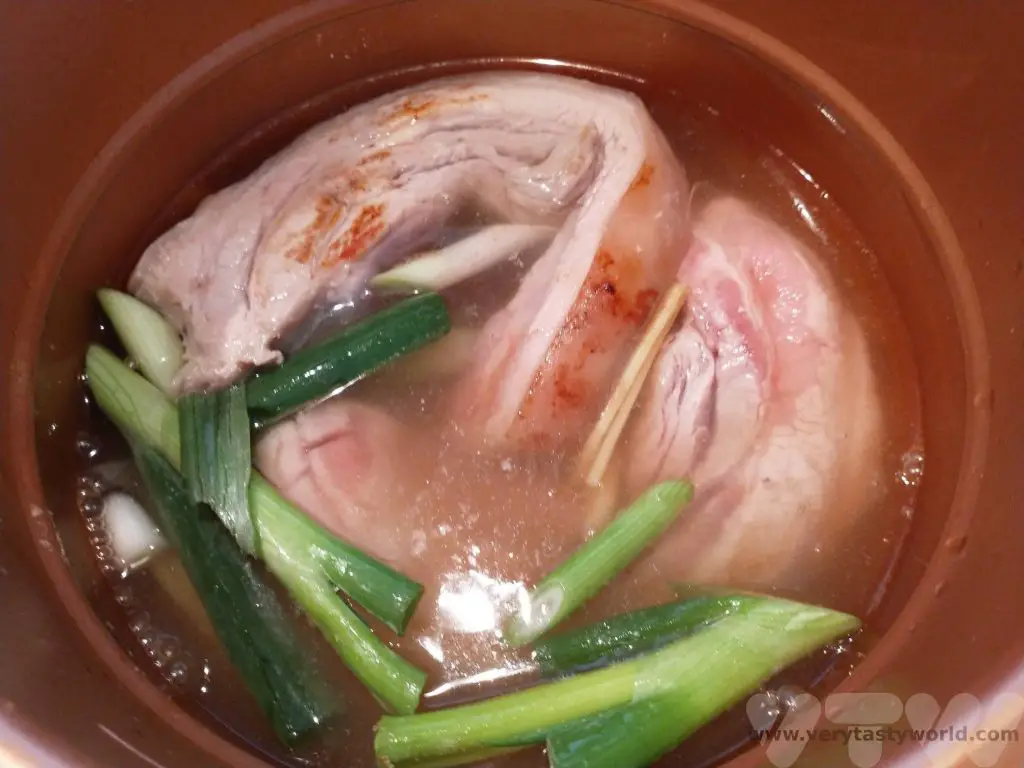
When the pork comes out it should be wonderfully soft and close to falling apart (but not actually falling apart). Cut the pork into chunks – about 2cm length. We also decided to cut off the rind at this stage.
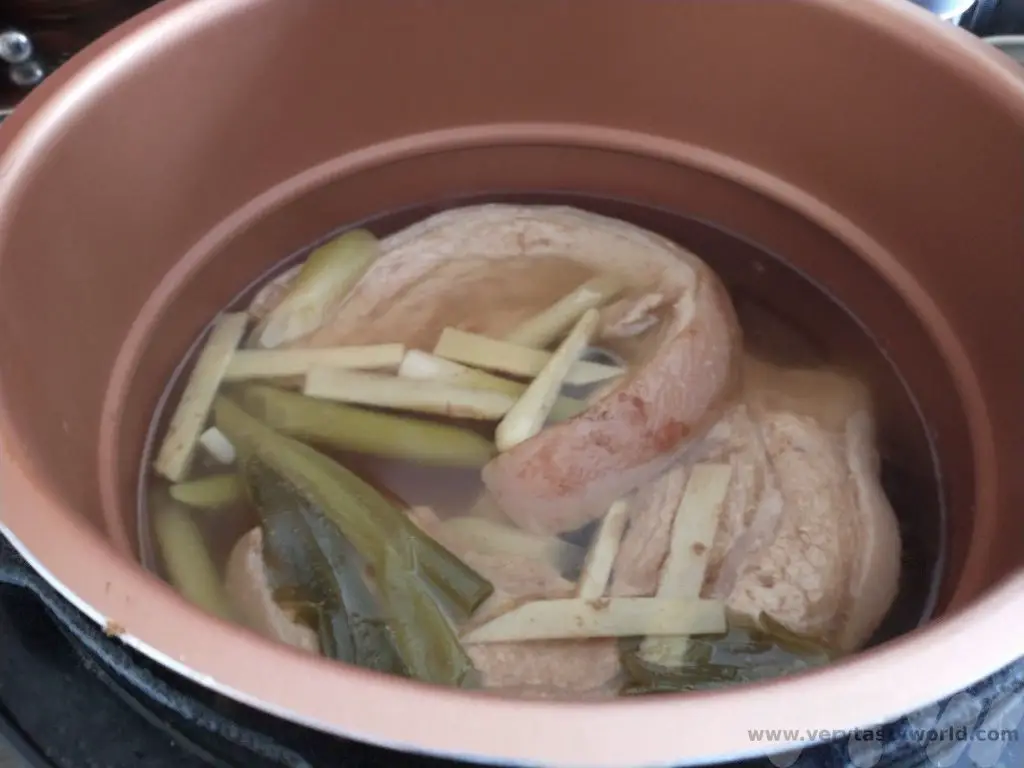
Don’t forget to keep the stock – it will make a wonderful base for ramen noodles or soup. You can pop it into the freezer if you’re not going to use it immediately.
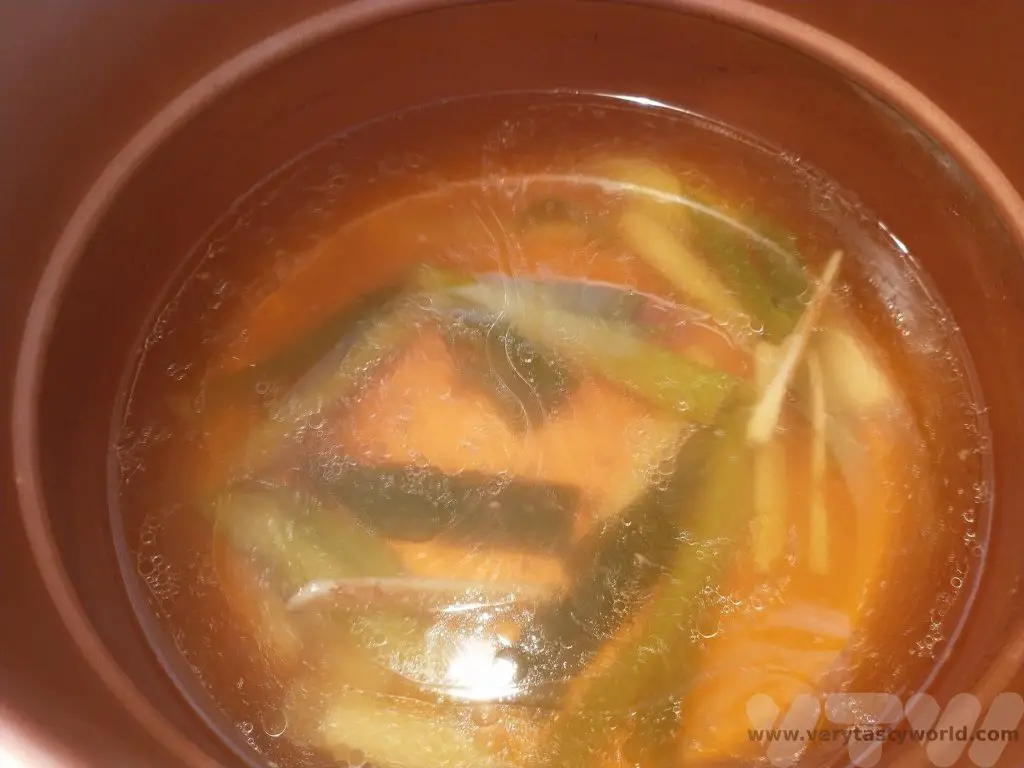
Put the water, soy sauce, sake (or wine), mirin and sugar into a pan and bring to the boil.
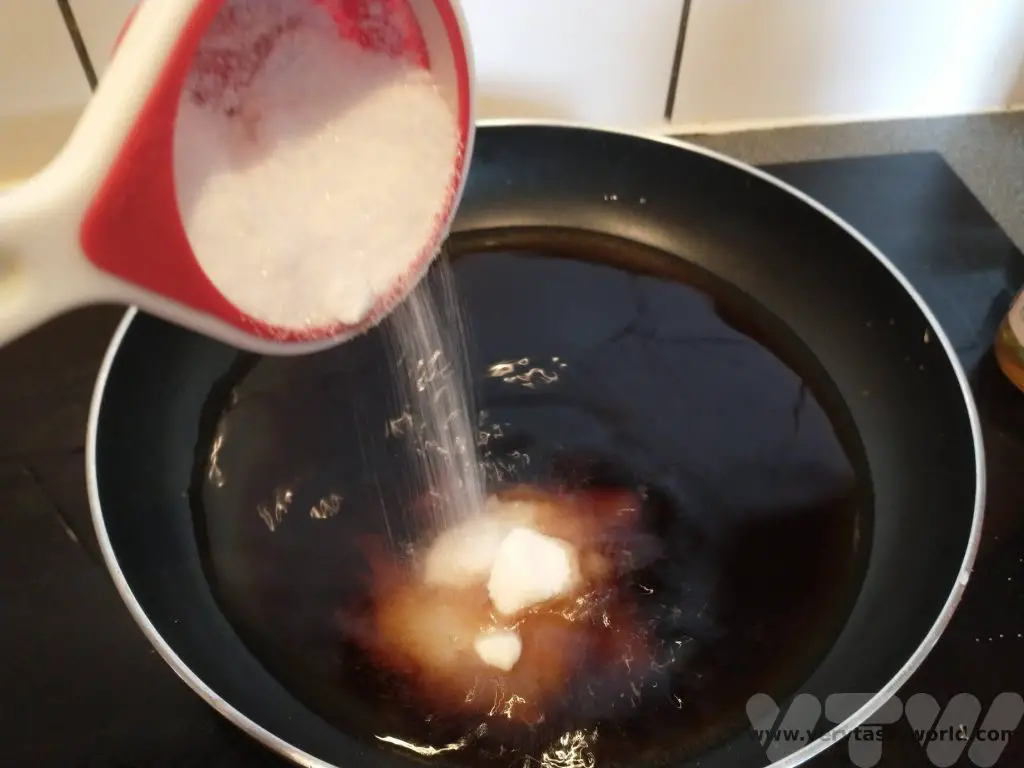
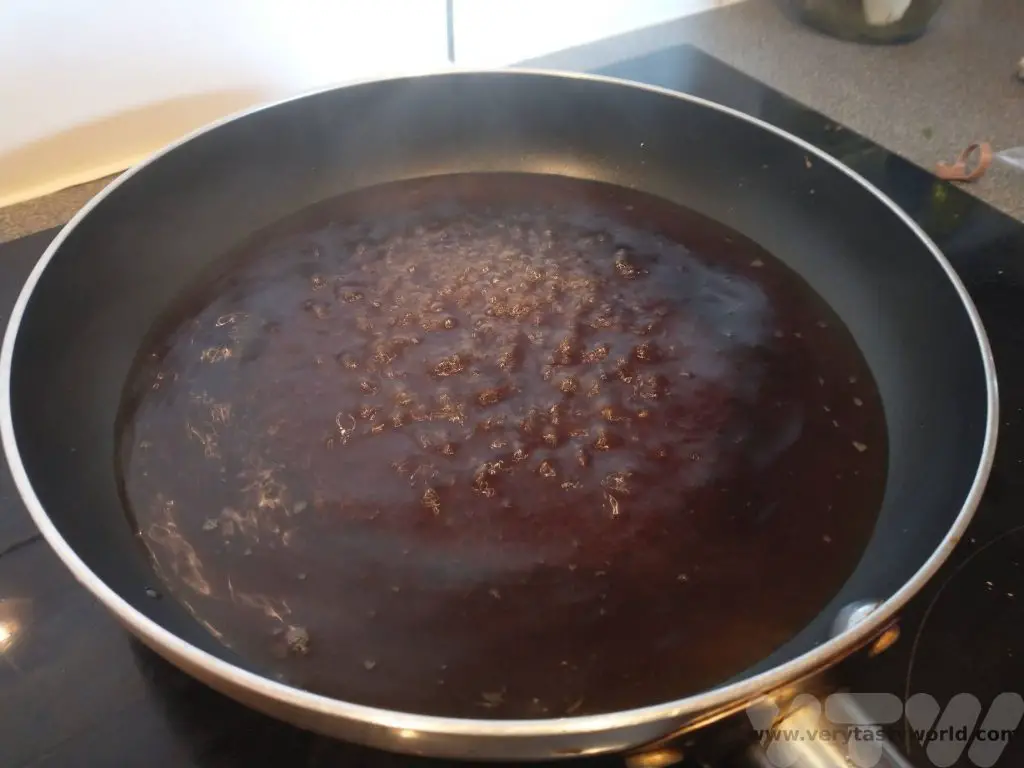
Carefully place the pork chunks into the pan and press down so that the sauce completely covers them.
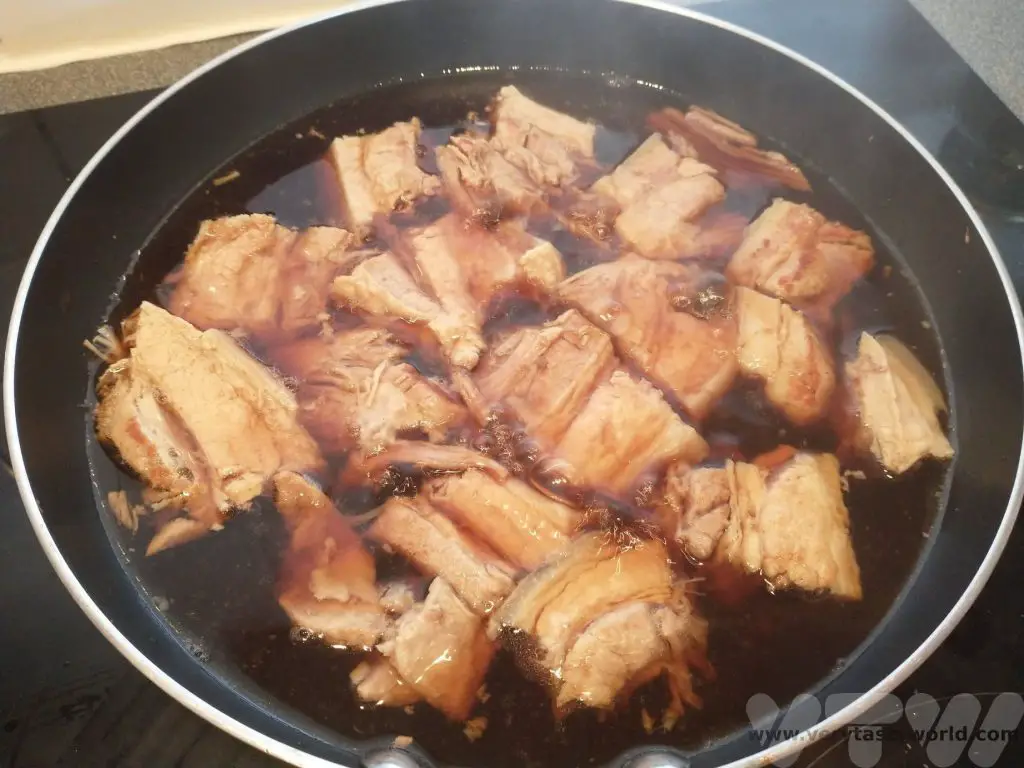
(In retrospect we should have put the pork into a deeper pan – a casserole dish – because the sauce did splutter a lot and because there was sugar in it, it stuck to our hob which made clearing up a bit of a nightmare!)
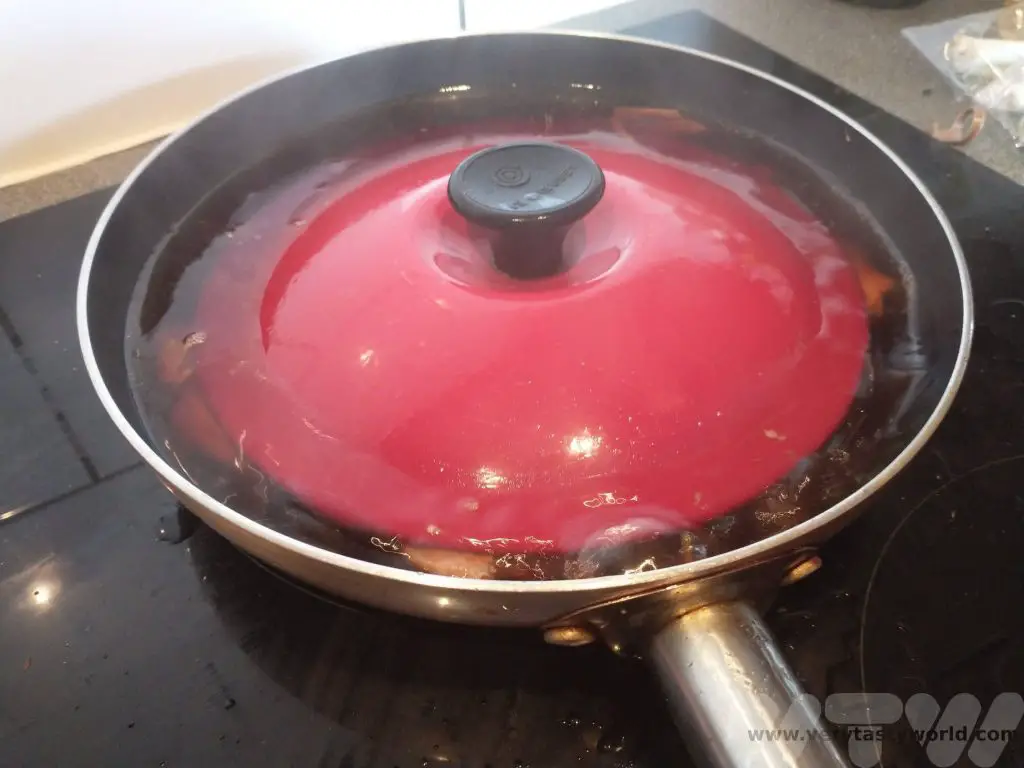
Reduce the sauce until it has almost become a paste – it will have coated the pork and caramelised on the underside. It will look glossy and luscious.
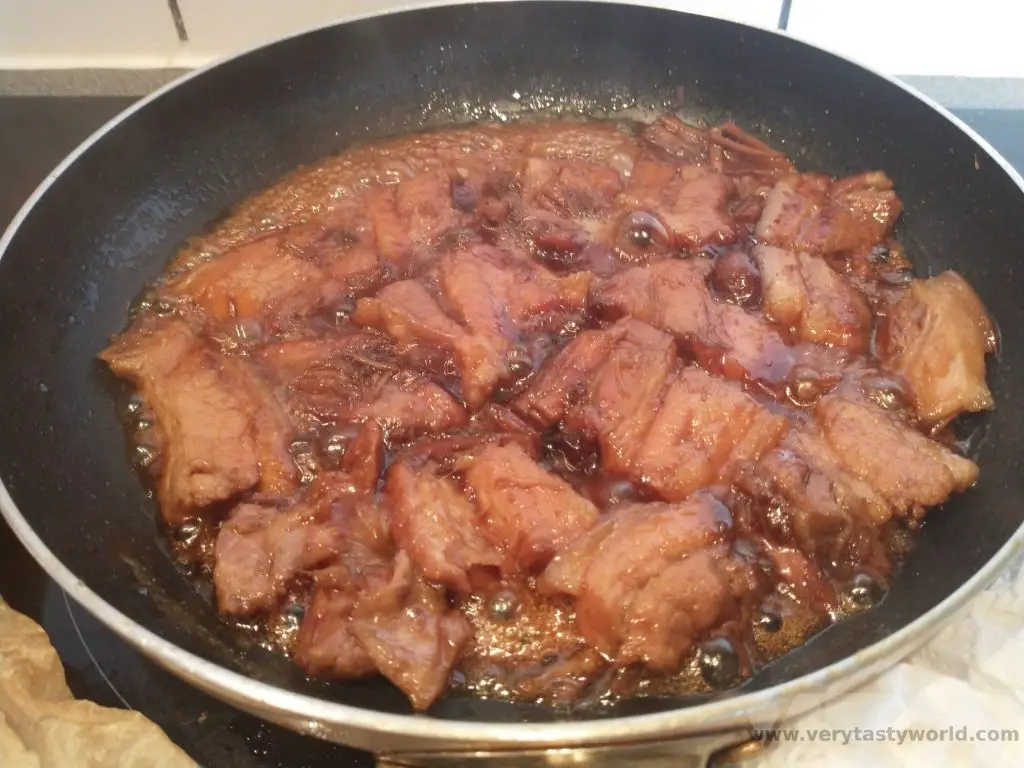
Serve atop plain white rice garnished with chopped spring onion. It is often accompanied with a splodge of karashi. We like adding some pickled ginger as well.
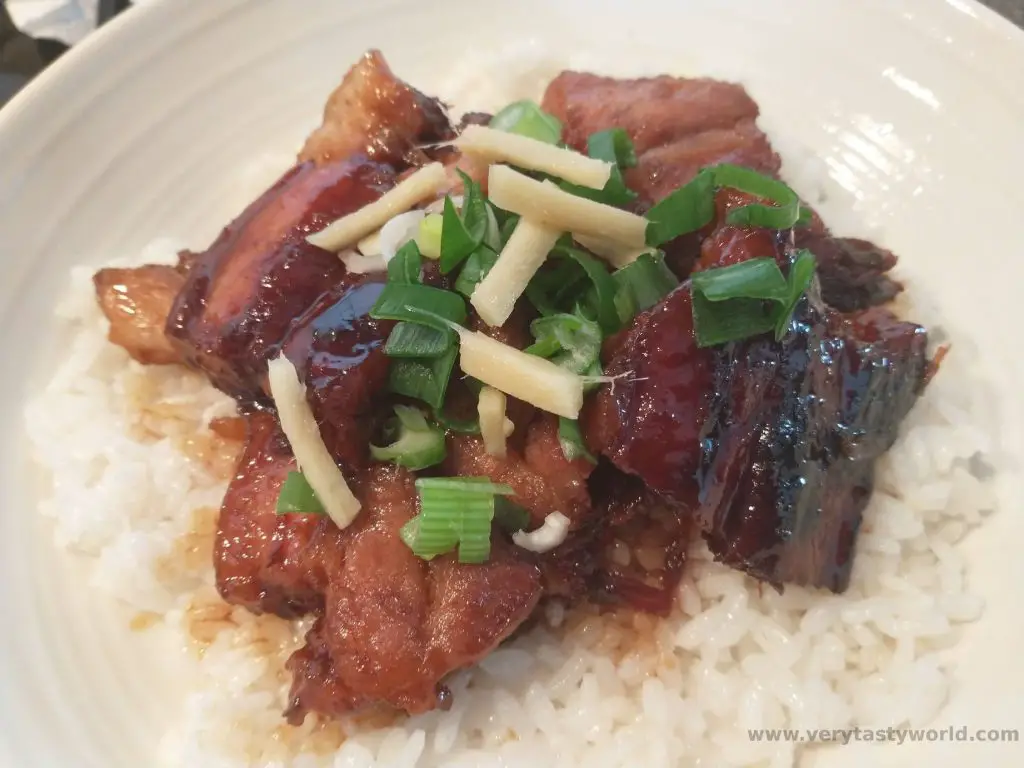

- RECIPE Oyakodon Donburi
- Zero Waste Recipes Before Your Holiday
- RECIPE: Vegetable Biryani Tamil Nadu Style
- RECIPE: Vegan Wild Garlic Pesto
- Recipe: Venetian Pasta Sauce
- RECIPE: Biryani Raita Recipe
- RECIPE: How to Make Costa Rica’s Gallo Pinto
- Recipe: Japanese Simmered Pork Belly – Buta no Kakuni
- RECIPE: How to Make Umeboshi

- Recipe: Simmered Shiitake Mushrooms
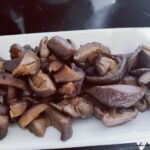
- How to Use Public Transport in Japan

- RECIPE Oyakodon Donburi

- Planning a Trip to Japan

- The Makanai: Cooking for the Maiko House

- Setsubun Food – Bean Throwing Day

- The Gassho Farmhouses of Rural Japan

- Recipe: Japanese Simmered Pork Belly – Buta no Kakuni

- RECIPE: How to Make Umeboshi

RECIPE – Kabocha Korroke – Pumpkin Croquettes
Kabocha is a type of squash, often called a Japanese pumpkin. It is small-medium in size (around 25-30cm diameter). Its flesh is bright orange which contrasts beautifully with its dark green skin. They are also pretty easy to grow. And it is a truth universally acknowledged that home-grown vegetables are always more delicious than shop bought ones.

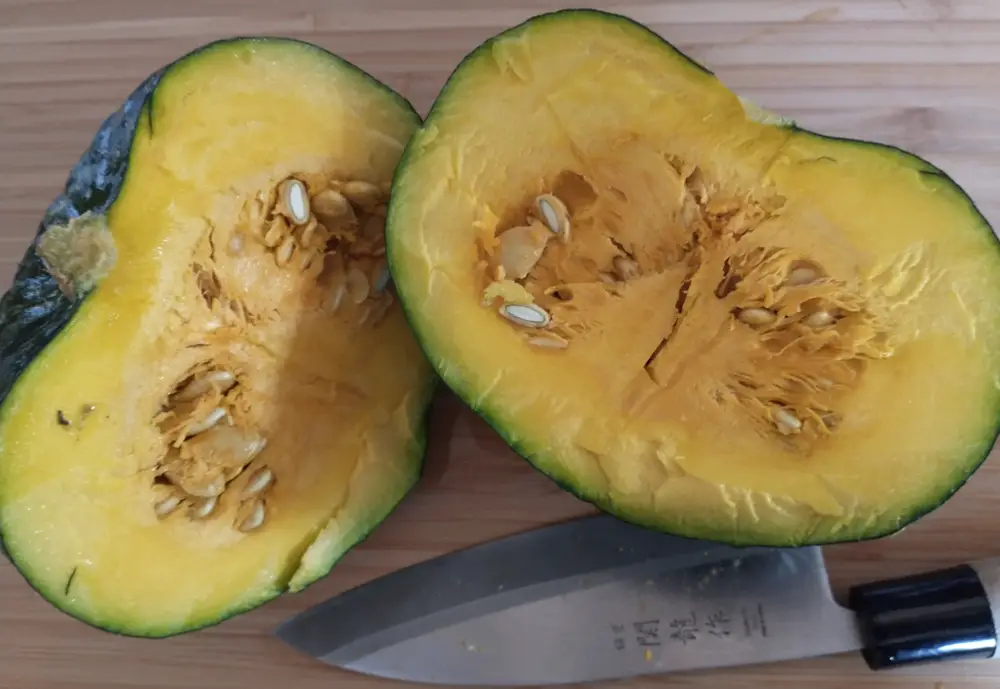
This year we grew three of the beauties in our little garden and the very first thing we wanted to make once harvested, was ‘korroke’, a Japanese version of croquettes (the word is spelled in katakana, the phonetic alphabet used for words of international origin). It’s the sort of dish that you would find in a Japanese izakaya (a bar that sells alcohol and tasty snacks/small dishes). They are simple to make and utterly scrumptious. Here’s our recipe for Kabocha Korroke – Pumpkin Croquettes:
Ingredients For Pumpkin Croquettes
1 kabocha pumpkin. If you can’t get a kabocha, other squash can be used. Pumpkin might be a bit too squishy but something like a butternut squash would work well.
1 egg (vegans can use corn starch mixed with warm water in an approximate ratio of 1:3)
50g (approx) Plain flour
50g (approx) Panko breadcrumbs
Pinch of salt
Oil for frying/spray oil for baking
Tonkatsu sauce to eat with (Brown sauce will work well if you can’t get tonkatsu)
Method
Cut the pumpkin in half and then into slices. Remove the seeds (we kept loads of seeds and dried them so that we can sow them next year).
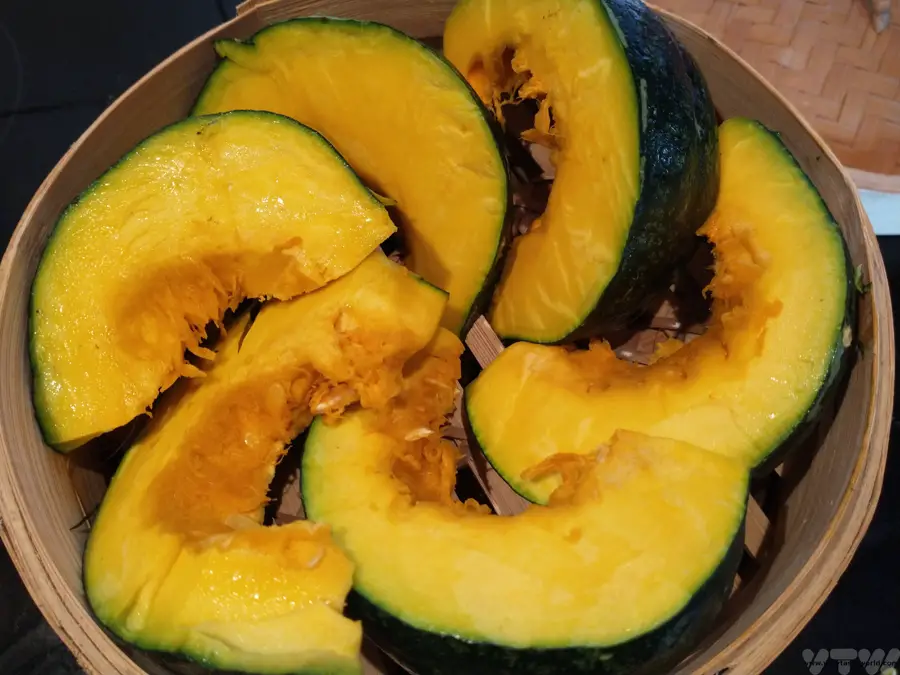
Arrange the slices into a steaming bowl. We tend to use the Asian style bamboo baskets as they stack very nicely and can just sit on top of a saucepan of boiling/simmering water.
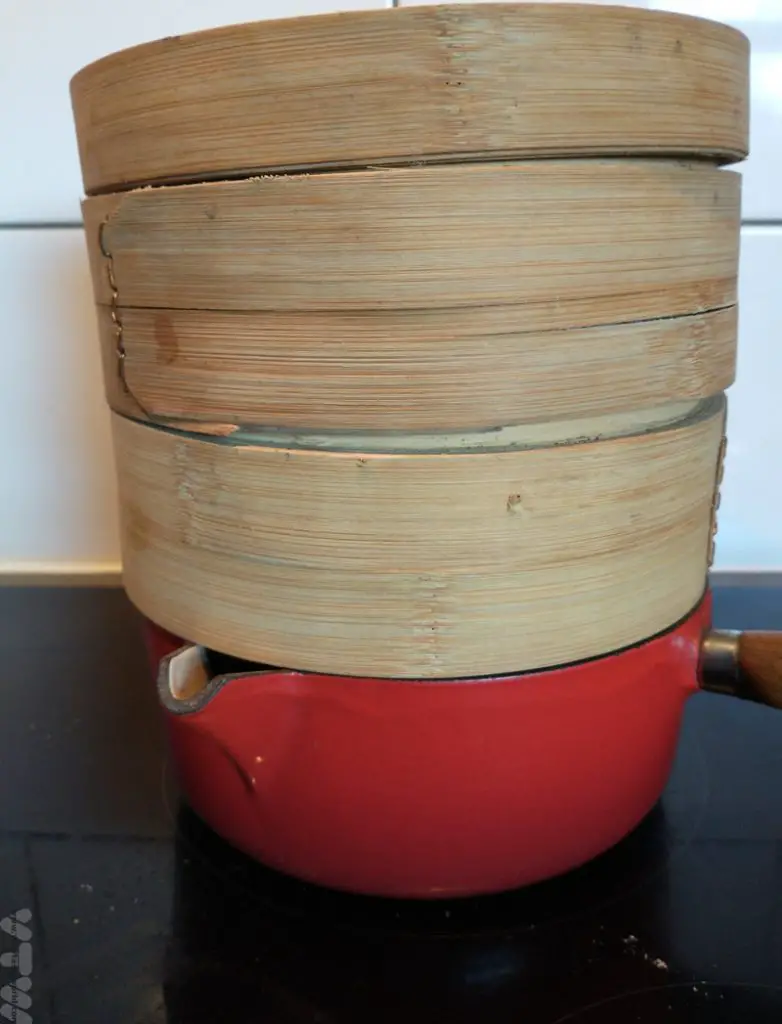
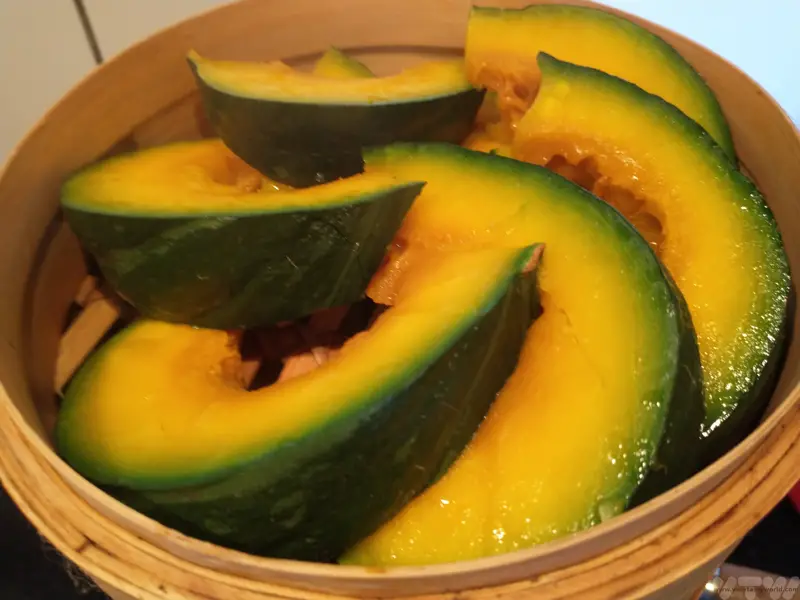
Steam for around 15 minutes or until the pumpkin is soft – a knife should easily sink into the flesh. (If you don’t have a steamer you can bake the pumpkin slices in the oven for around 40 minutes.)
Although the skin of the kabocha is edible, for the purposes of the korroke it is best to remove it. (You can treat yourself to pumpkin skin snacks – once they have cooled down a bit – while you continue the preparation.)
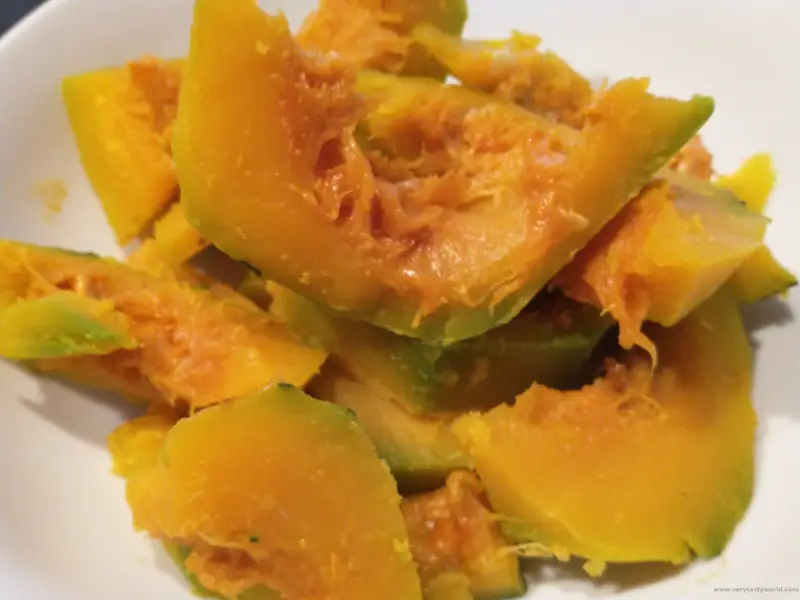
Add a pinch of salt and mash the pumpkin using a potato masher. It is possible to add other flavourings at this stage if you wish. Some recipes add sautéed onions, others lashings of butter, yet others include shichimi (Japanese seven spice mix). We just seasoned with the salt, which brings out the natural flavour of the kabocha, in this instance.
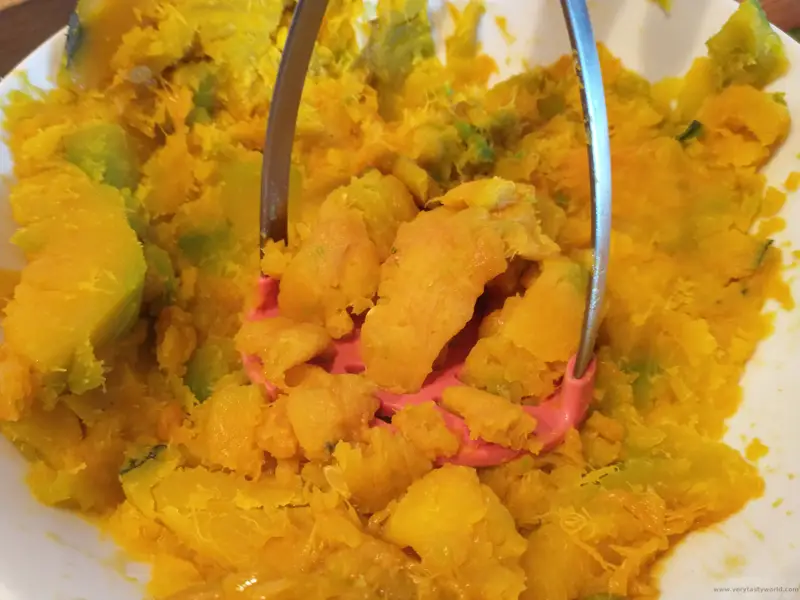
Form into patties.
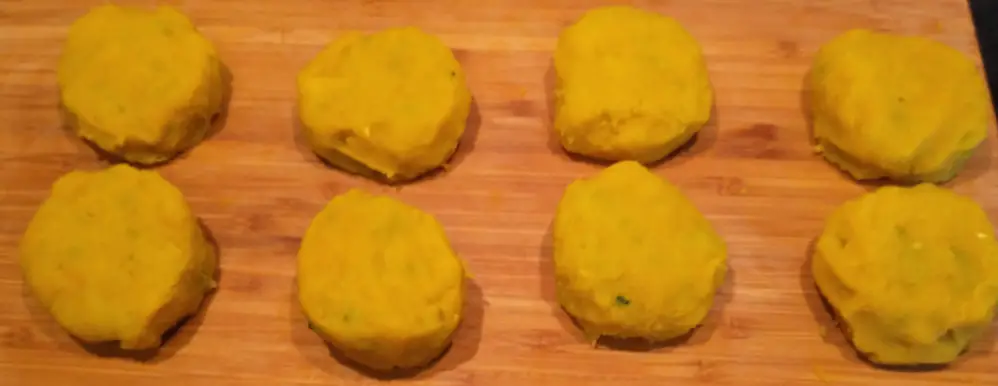
Panko are Japanese breadcrumbs. They are crispy and super dry, usually made from white bread. You can buy panko in most supermarkets these days but ordinary breadcrumbs will be fine if you can’t find them. Set out three bowls. One for flour, one for an egg, lightly beaten, and one for the panko.

Dip each patty in the flour, then the egg, then the panko. This process can get a little messy (especially if you are a clumsy cook). Do not attempt to take photos using your phone if you have sticky fingers.
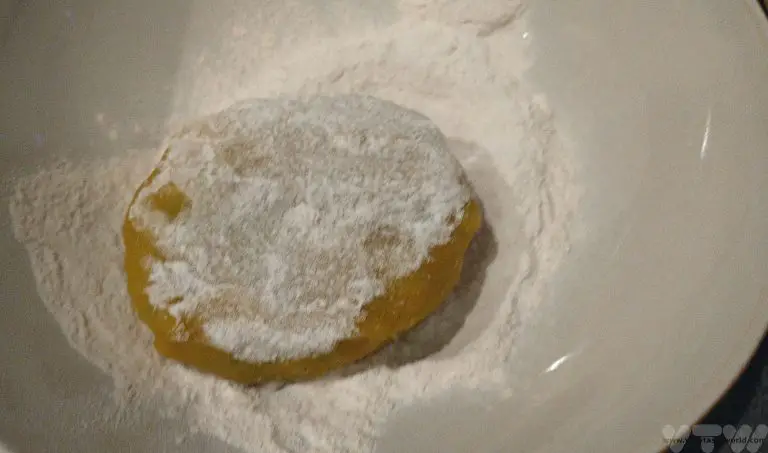
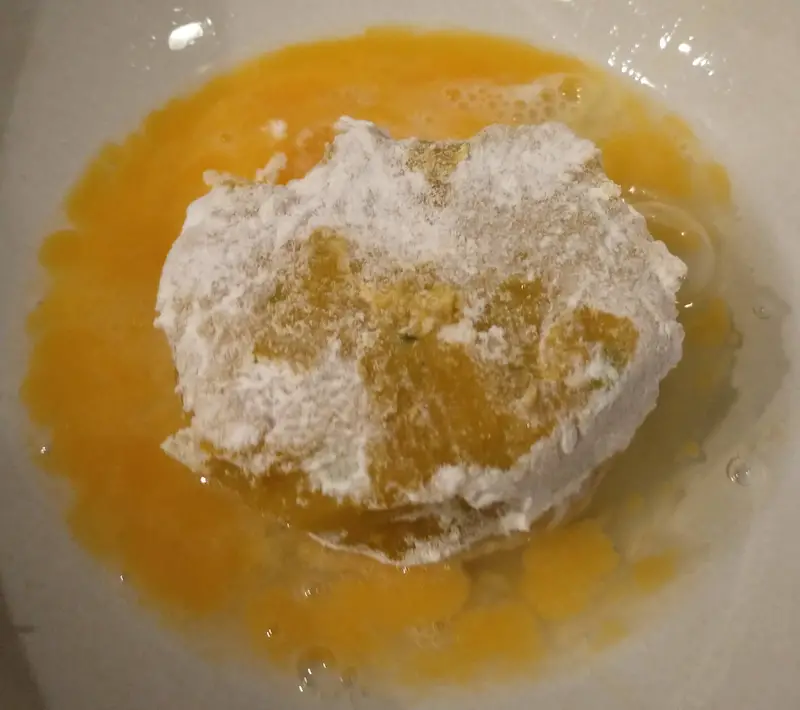
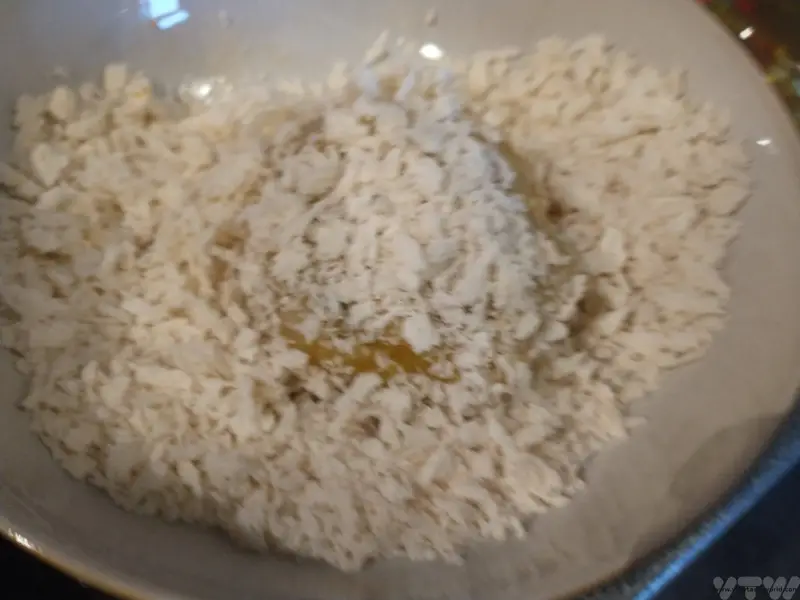
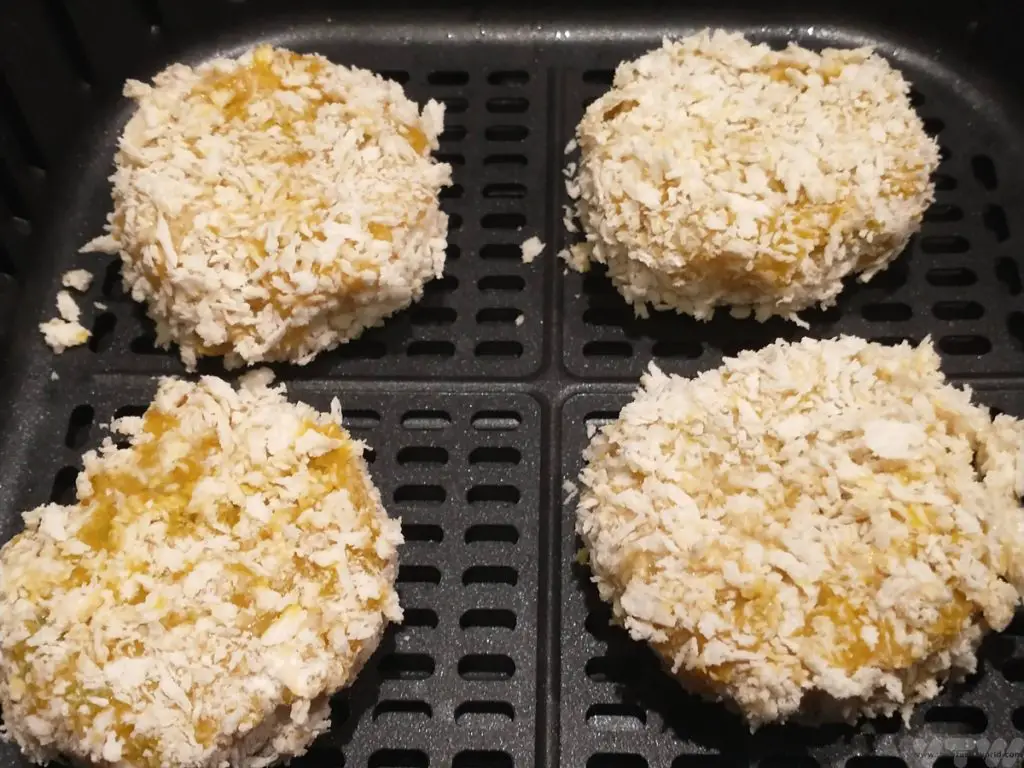
There are several options for cooking. Bear in mind that the pumpkin is already cooked so the korroke don’t need long. We’ve recently invested in an air fryer so thought we would use that. Just spray the patties with oil and cook at 190C for 4 minutes on each side. You can also bake them in the oven for about 8 minutes. Or you can fry them the old-fashioned way in vegetable oil for a couple of minutes on each side or until the panko are golden.
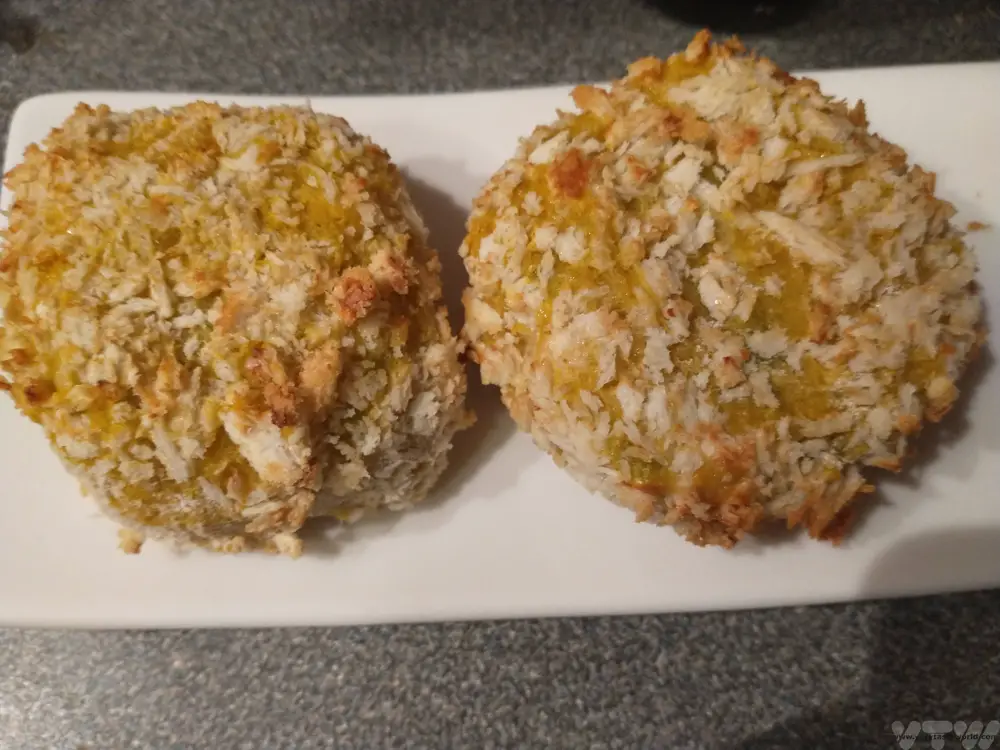
Then it’s time to scoff! Korroke are often served with tonkatsu sauce. This is a sweet and tangy sauce that perfectly complements the pumpkin. If you can’t find tonkatsu, brown sauce (the type you eat with a cooked breakfast) is a good substitution. Other accompaniments can include mayo or a soy based dipping sauce. Best served with a nice, cold beer. Or two.
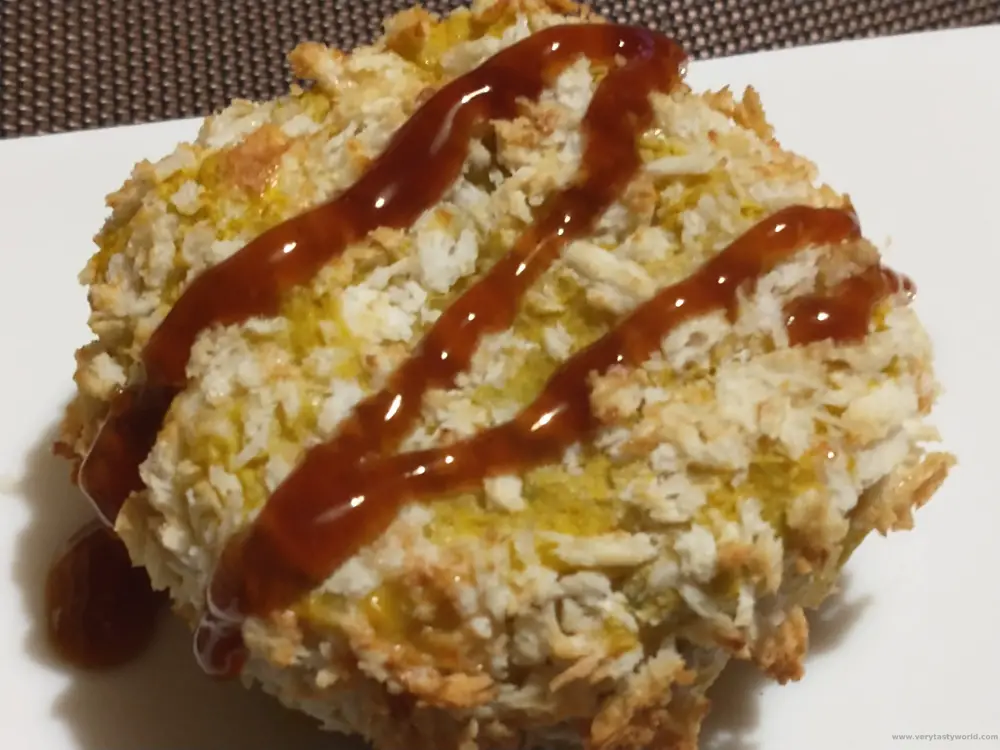

- RECIPE Oyakodon Donburi
- Zero Waste Recipes Before Your Holiday
- RECIPE: Vegetable Biryani Tamil Nadu Style
- RECIPE: Vegan Wild Garlic Pesto
- Recipe: Venetian Pasta Sauce
- RECIPE: Biryani Raita Recipe
- RECIPE: How to Make Costa Rica’s Gallo Pinto
- Recipe: Japanese Simmered Pork Belly – Buta no Kakuni
- RECIPE: How to Make Umeboshi







